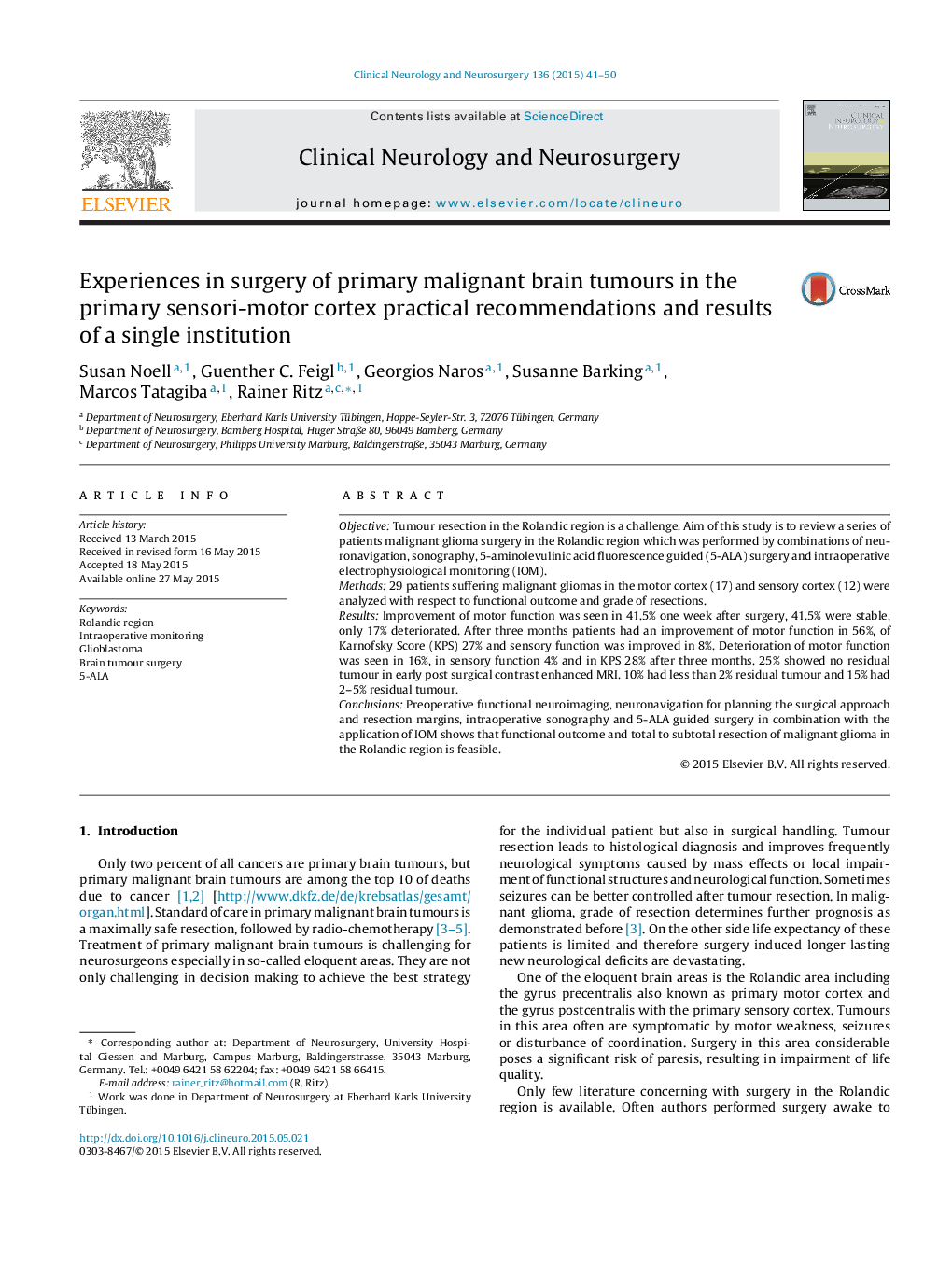| Article ID | Journal | Published Year | Pages | File Type |
|---|---|---|---|---|
| 3039824 | Clinical Neurology and Neurosurgery | 2015 | 10 Pages |
•Resection of primary malignant brain tumours in the sensori-motor cortex is possible with total to near subtotal resection in 50% of patients.•Motor function improves or remains stable in most patients (84%).•IOM in combination with intraoperative sonography are the main tools localizing the entry point for tumour resection.•IOM in combination to 5-ALA fluorescence are the main tools for tumour resection.
ObjectiveTumour resection in the Rolandic region is a challenge. Aim of this study is to review a series of patients malignant glioma surgery in the Rolandic region which was performed by combinations of neuronavigation, sonography, 5-aminolevulinic acid fluorescence guided (5-ALA) surgery and intraoperative electrophysiological monitoring (IOM).Methods29 patients suffering malignant gliomas in the motor cortex (17) and sensory cortex (12) were analyzed with respect to functional outcome and grade of resections.ResultsImprovement of motor function was seen in 41.5% one week after surgery, 41.5% were stable, only 17% deteriorated. After three months patients had an improvement of motor function in 56%, of Karnofsky Score (KPS) 27% and sensory function was improved in 8%. Deterioration of motor function was seen in 16%, in sensory function 4% and in KPS 28% after three months. 25% showed no residual tumour in early post surgical contrast enhanced MRI. 10% had less than 2% residual tumour and 15% had 2–5% residual tumour.ConclusionsPreoperative functional neuroimaging, neuronavigation for planning the surgical approach and resection margins, intraoperative sonography and 5-ALA guided surgery in combination with the application of IOM shows that functional outcome and total to subtotal resection of malignant glioma in the Rolandic region is feasible.
